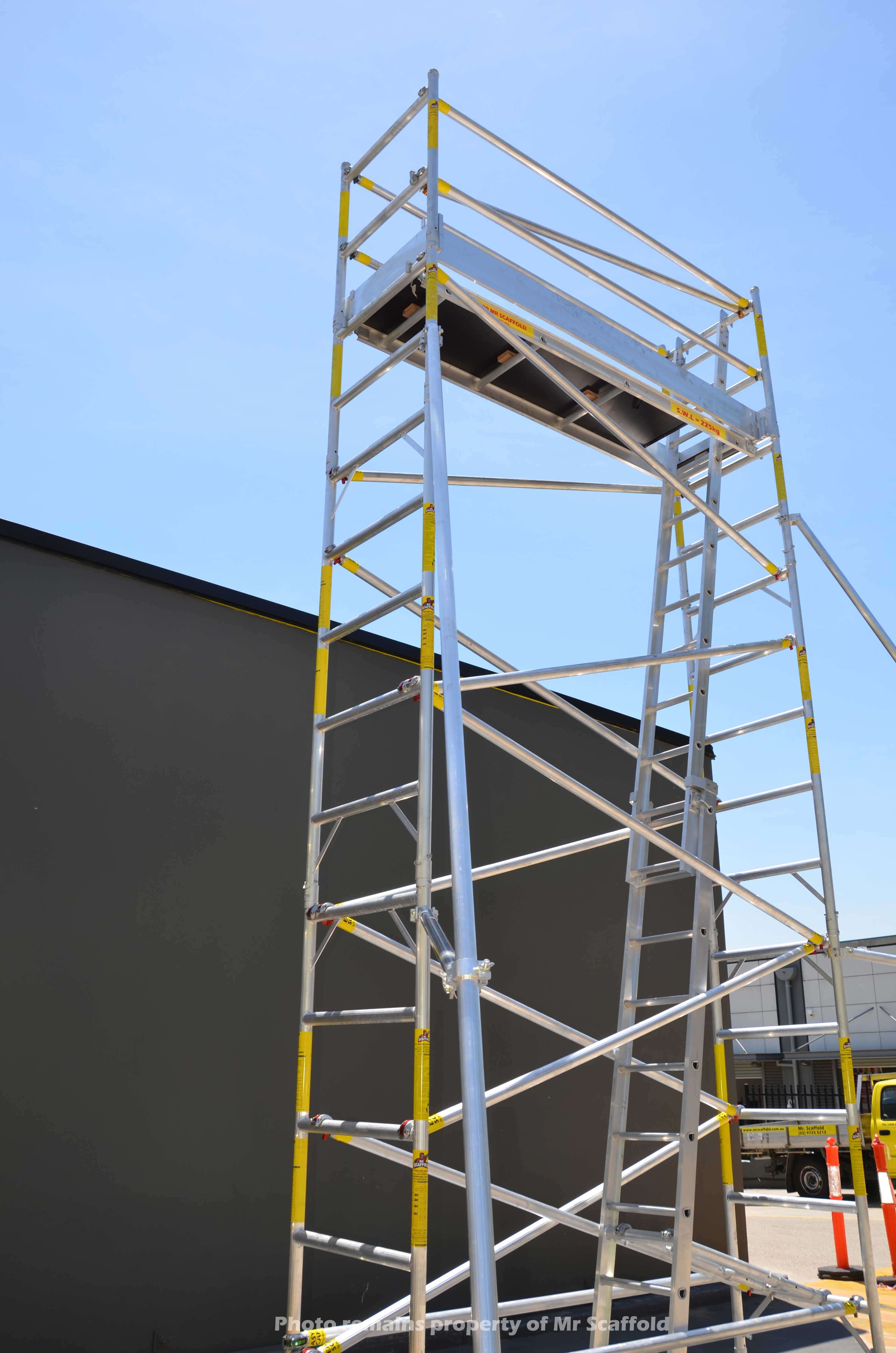I was watching one of our displays at the Mr Scaffold Head Office in Wetherill Park during a storm last month. We had a single width easyscaf (light duty) tower with a platform at 5.4 metres. That meant the top rail was at 6.3 metres, and the scaffold is only 0.85 metres wide. With the light weight of the scaffold, I was watching the rain come in sideways, and just waiting for the tower to tip.
It didn’t tip, in fact it didn’t move at all. Then I noticed the outriggers that were splayed out from the scaffold, and firmly secured to the uprights in two places.
The experience did get me wondering about the use of outriggers. I have seen some competitors with very different outriggers to the ones we use, and so I sought advice from our scaffold experts.
Scaffolding Outriggers are an important safety device that are designed to provide stability, and are increasingly important the higher you go. Workcover Regulations generally advise that the manufacturers guidelines are to be followed for outriggers, and do not specify a height to base ratio.
Mr Scaffold works with a general rule of 3 to 1. Whenever the height of the working platform is greater than 3 times the width of the scaffold tower, then we provide outriggers when we supply the scaffold. For Example, the tower I mentioned I watched during the storm, had a platform width of 0.7 metres, even though the actual structure is wider, we use this platform width to provide a further buffer in our calculations for safety. We Multiply this by 3, giving us a platform height of just 2.1 metres before we apply outriggers. This is why all of our single width mobile scaffold towers include outriggers.
 As you can see in the picture to the left, our outriggers reach well up the height of the scaffold, and the braces reach towards the bottom of the scaffold. This design creates a spread of the forces being applied to tip the tower. They are transferred not only to the ground, by the long outrigger, but are negated by the brace returning to the base of the structure. This arrangement is far safer than other outrigger arrangements that only attach at the base of the mobile tower.
As you can see in the picture to the left, our outriggers reach well up the height of the scaffold, and the braces reach towards the bottom of the scaffold. This design creates a spread of the forces being applied to tip the tower. They are transferred not only to the ground, by the long outrigger, but are negated by the brace returning to the base of the structure. This arrangement is far safer than other outrigger arrangements that only attach at the base of the mobile tower.
Mr Scaffold only stocks outriggers in the stronger medium duty tubing, regardless of the duty rating of the scaffold purchased.
Our recommendations are that the outriggers be positioned to reach as high as possible whilst placing the foot of the outrigger at least one metre from the base of the mobile tower. Secure all fittings on the outrigger and double-check before attempting to mount the mobile scaffold.
Outriggers are supplied as a set (2 x outriggers) for each scaffold that requires them, however Mr Scaffold only supplies a single set as standard. If you plan to use the scaffold away from a wall as a standalone unit, then we recommend you purchase another pair of outriggers for your mobile scaffold.
If you have a question about your scaffold, don’t hesitate to email us or ring on 1300 677 223 to have our scaffolding experts help you with your access problem.

